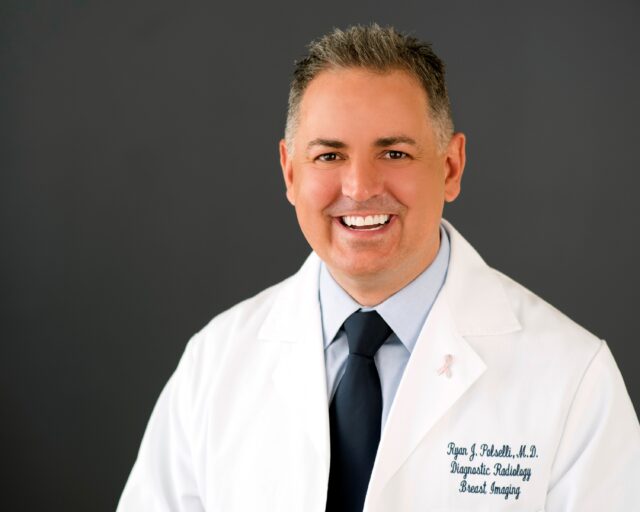The medical field in the United States has long been burdened by two millstones around its metaphorical neck: affordability and accessibility. For many Americans, access to the critical healthcare they need and deserve is gated behind high costs and obtuse, frustrating, and arcane bureaucracy—if they’re able to find a care provider at all. This is especially true for women, who have historically faced myriad institutional and cultural barriers to critical healthcare.
Breast cancer is the second leading cancer-related cause of death for women in the United States—but if it’s detected early, before it can spread to nearby structures or further organs in the body, the 5-year survival rate is over 95%. The most common and effective technology for detecting breast cancer to date is through mammography, a form of breast imaging. However, access to mammography is often one of those systemic barriers mentioned earlier, which has led to a simple, tragic truth: many women simply do not get mammograms.
This truth is both a symptom of a larger problem, and a problem in itself, and it’s one that Dr. Ryan Polselli has set his career to solving. As a distinguished radiologist and entrepreneur specializing in breast imaging, Dr. Polselli founded his company MammoLink to address the myriad barriers preventing or discouraging women from getting their regular breast imaging appointments. Through MammoLink he hopes to revolutionize the relationship between patients, breast imaging radiologists, and primary care physicians in order to make the mammography experience smooth and painless from scheduling through the procedure itself.
The Barriers To Breast Screening
Some of the barriers between women and accessible mammography are common within the United States healthcare system, but some are unique to this specific process. Broadly speaking, the usual problems of variable costs, working around insurance networks, and poor education on the necessity of certain health measures continue to plague patients in need. However, there are a number of specific problems women seeking breast imaging services encounter, especially in Dr. Polselli and MammoLink’s home state of Florida.
Dr. Ryan Polselli saw plenty of these issues firsthand over his years of practice as a breast imaging radiologist. There is a basic accessibility problem keeping mammography from the patients that would most benefit from it; facilities capable of conducting the breast imaging process are not ubiquitous, and thus many patients have to endure long travel times (and their associated monetary and time costs) to seek diagnostic treatment. Even if mammography was regionally accessible to a patient, other problems still remained. Dr. Polselli often saw extensive waiting periods that could grow to be months long, and communication between physicians, patients, and providers so inconsistent that cancellations and rescheduling were endemic. To top it off, even if a patient was able to successfully schedule an appointment, she’d come face to face with frustratingly obfuscated and unclear cost structures—one more unnecessary source of anxiety.
These problems were often bad enough to dissuade women from seeking care at all, and that’s before the uncomfortable and anxiety-inducing nature of most mammogram procedures are factored into the decision. In short, mammography suffers from horrendously bad accessibility, especially in rural areas, and the entire diagnostic process is rife with anxiety, discomfort, and instability.
An Opportunity For Something Better
Dr. Ryan Polselli’s medical experience and entrepreneurial instinct blended to create MammoLink, a company and service designed to solve these widespread issues with mammography in America’s healthcare system. The company provides the missing link between patients and the best mammography care they can have, encouraging women to get their preventative diagnostic breast screenings by removing as many barriers as possible.
“Through the use of fellowship breast imagers I wanted to be able to provide the most sophisticated care and make it more accessible,” Dr. Polselli says. “MammoLink makes sure that [patients] are in control of their health and are given the proper tools needed to make critical decisions.”
MammoLink was the rare opportunity for Dr. Ryan Polselli to address a critical healthcare failing in his community while also developing his career, and the company has been met with consistent success and innovation. From a number of new, innovative 2D and 3D imaging devices (patented), to clarifying communications between physicians, patients, and providers, to bringing care to the patient with the state-of-the-art 3D Mobile Mammography bus, MammoLink has successfully brought accessible mammography services to Florida, with plans to expand further beyond.
One of MammoLink and Dr. Polselli’s most significant contributions was leading the charge on cost transparency. Patients are best able to make decisions when they possess all of the relevant information, and cost transparency is incredibly significant in the context of the American medical system. Dr. Polselli says, “Cost transparency is on trend. It has been needed for a very long time and I am eager to see how this changes the world of healthcare . . . communication is important in any type of relationship and cost transparency is on the cutting edge. It puts the patients and physicians back in the driver’s seat.”
Future Innovations in Breast Imaging
Dr. Ryan Polselli knows that modern problems require modern solutions, and the ever-evolving nature of technology will present new challenges and opportunities for innovation. He’s specifically keeping a close eye on artificial intelligence (AI) and machine learning technologies for potential application in radiology screenings. They’ve already been reported to be helpful with image analysis and initial screenings, though more rigorous tests and analyses are still forthcoming, and the human element to patient care will always be critical.
While MammoLink’s dedication to cost transparency is currently novel in the healthcare industry, Dr. Polselli doesn’t think that will always be the case. Patient-centered healthcare is growing more popular, but Dr. Polselli believes that patient-led healthcare is the future of the industry.
“Eventually hospitals, CEOs, health insurance companies and others will not be on top so to speak. This is really exciting because patients should be in charge of their healthcare decisions,” he says. “When all options, including risks and benefits, are communicated to the patients clearly, they have the information needed to make valuable informed decisions.”
By Chris Bates










